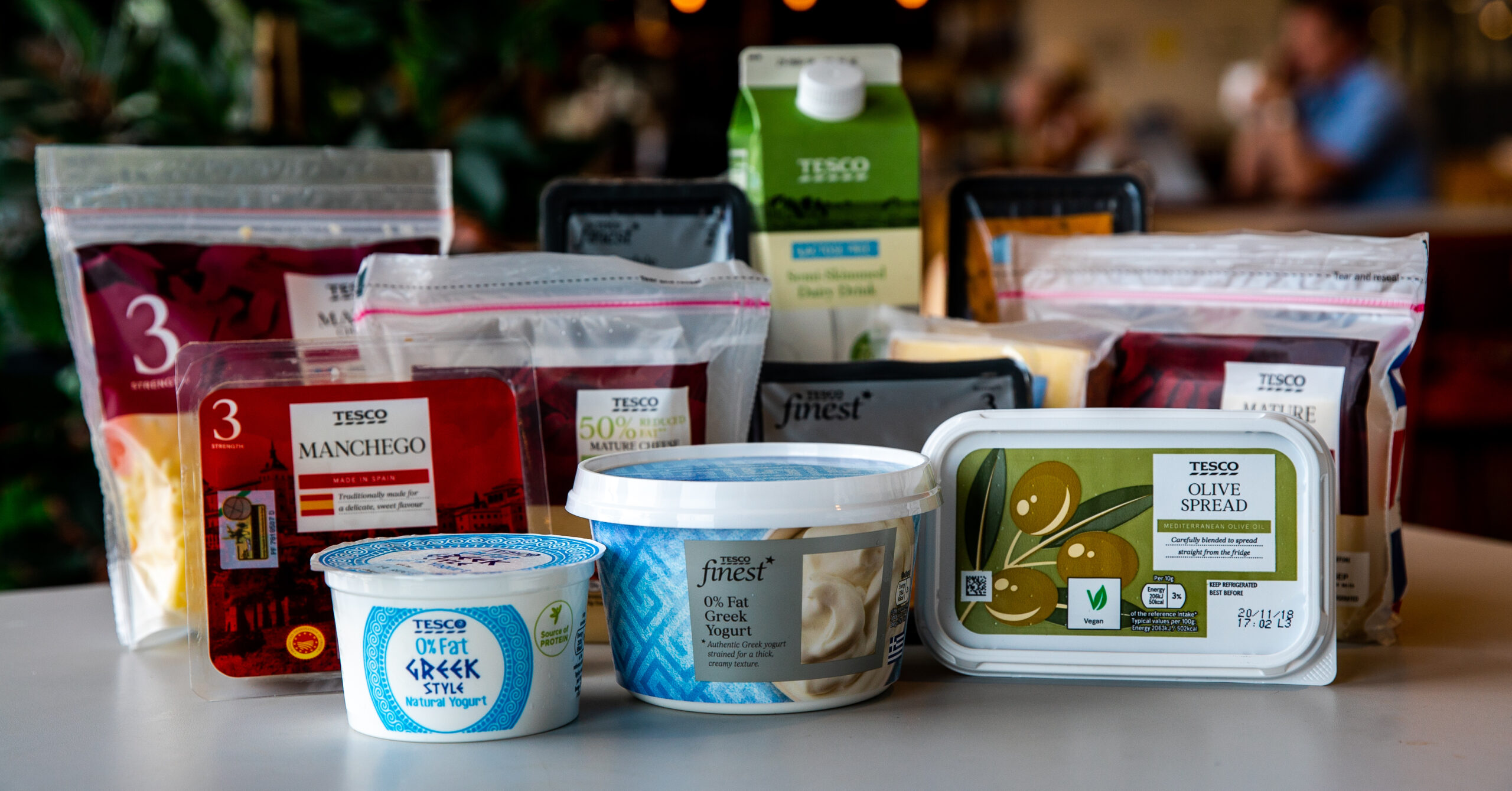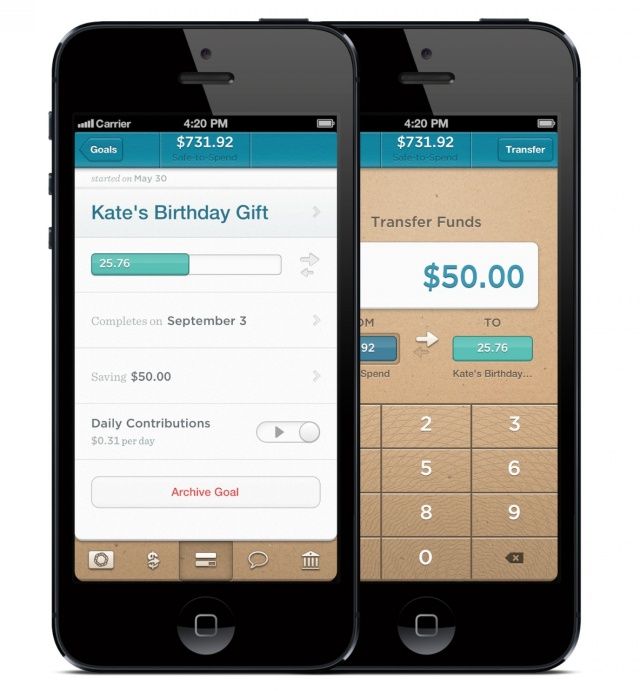|
Getting your Trinity Audio player ready...
|
Are you looking for some creative and effective brand strategy examples? Are you wanting to see how successful brands have used strategy to make an impact?
Developing an effective brand strategy can be difficult and time-consuming. Companies need to determine their target audience, create a compelling message, and develop an actionable plan on how to reach audiences. The best way to build a strong brand is by understanding what strategies other successful companies have employed.
In this article, we will dive into the world of brand strategies and look at various examples of how successful brands have implemented their strategies. You will learn about different techniques that are used for creating a unique identity for your brand and understand the value behind each one.
By analyzing these tried and true methods of developing a cohesive identity, you will be able to apply them to create your powerful brand strategy.
Brand Strategy
A brand strategy is a comprehensive plan that outlines how a business will position, differentiate, and communicate its brand to target audiences to achieve its business goals.
23 Brand Strategy examples
An effective brand strategy gives your business a major edge in increasingly competitive markets. But, developing a successful brand strategy can be daunting – where do you start?
Here are 23 real-world examples of companies that have successfully implemented brand strategies to stand out from the competition.
So let’s dive in and explore how each of these brands has crafted a unique identity and why these strategies were successful:
1. Differentiation branding
Differentiation branding is a powerful strategy that can set your company apart from competitors and make it more appealing to consumers. By creating a unique offering that your competitors don’t have, such as emphasizing a higher level of quality or delivering a personalized experience, you can attract a larger market share and drive sales growth.
Take the example of two ride-sharing companies, Uber and Lyft.
Uber focuses on providing a comfortable and professional experience, going the extra mile by offering amenities like food and drinks and ensuring comfortable seating for passengers.
On the other hand, Lyft differentiates itself by prioritizing personalized service, allowing passengers to ride in the front seat and encouraging drivers to engage in conversation with them.
These unique approaches resonate with different segments of customers, allowing both companies to thrive in the competitive ride-sharing industry.
Implementing a differentiation branding strategy requires a deep understanding of your target audience and their preferences. By identifying what sets your brand apart and leveraging those unique qualities, you can create a strong brand identity and position yourself as the preferred choice in the minds of consumers.
Remember, differentiation branding goes beyond simply promoting features or benefits; it’s about creating a distinctive experience or value proposition that captures the attention and loyalty of your target market. By continuously refining and evolving your differentiation strategy, you can stay ahead of the competition and establish your brand as a leader in the industry.
2. Product branding
Product branding is a popular type of branding strategy used by many companies. The main objective of this approach is to make a single product easily recognizable to consumers. Symbols, graphics, and distinctive packaging play an essential role in product branding as they help customers quickly identify your products.
For instance, consider a company that produces energy drinks. To differentiate their brand from other energy drink brands, they may use unique packaging designs and logos on all their products. This helps to establish a strong brand identity and make their products more easily identifiable in a crowded market.
Additionally, product branding can help build customer loyalty since customers can easily recognize and trust the brand.
Another example of product branding is Nike’s Air Jordan line of sneakers. The brand has created a distinct logo for the Air Jordan line, making it instantly recognizable to consumers. This has helped to establish a strong brand identity and create a loyal customer base.

Generally, product branding is an effective way for companies to differentiate themselves in a crowded market and make their products more easily recognizable to consumers. It helps build brand identity, increase customer loyalty, and ultimately drive sales.
3. New audience targeting
A common branding strategy for businesses is to target a new audience. This involves identifying an untapped market or changing a brand’s image to appeal to a previously ignored group of consumers. This approach is particularly useful when a company wants to expand its customer base, increase revenue, or stay competitive in a crowded market.
To illustrate, let’s consider a physical bank that primarily caters to middle-aged customers. To attract a younger demographic and increase its revenue, the bank decides to target millennials and Gen Zers. The bank introduces online services, such as mobile banking apps and contactless payment options, which are more appealing to the tech-savvy younger generations.
Additionally, the bank may change its marketing campaigns, website design, and social media presence to appeal to the new target audience.
By targeting a new audience, businesses can broaden their reach and capture new market share. However, it’s important to note that this strategy requires a thorough understanding of the target audience and their needs, preferences, and behaviour. Companies must conduct extensive market research and tailor their branding and marketing efforts to effectively engage the new audience.
4. Name Identification
Name Identification is a powerful branding strategy that relies on the recognition of a brand’s name, slogan, logo, or colour scheme to attract clients to its new products or services. Consumers may instantly identify a brand based on any of these elements, allowing the brand to stand out in a crowded market.
For example, when a well-known technology brand with a recognizable name and logo releases new laptops on the market, many buyers may not even consider devices from other manufacturers, even if they offer similar features or better pricing. This is because the brand has built a reputation for quality and innovation, and consumers trust that its products will meet their needs.
However, building a strong brand identity takes time and effort. It requires consistent messaging and a cohesive visual identity that aligns with the brand’s values and resonates with its target audience. This is why many companies invest in branding agencies or marketing professionals to help them develop their brand identity and create compelling campaigns that resonate with their customers.
Overall, Name Identification is a powerful branding strategy that can help a brand stand out in a crowded market and build a loyal following of customers. By investing in a strong brand identity and consistent messaging, companies can create a powerful connection with their audience and drive long-term growth and success.
5. Individual branding
Individual branding is a strategy that involves creating a separate brand for each product or service offered by a company. This approach is particularly useful when the product line has a distinct target audience or features that differ from the organization’s primary identity. By creating separate brands, companies can better tailor their marketing efforts to specific customers, which can lead to increased sales and brand loyalty.
For instance, a consumer goods company might offer a range of products, including oral care, baby care, and home care products. To ensure that each product line resonates with its intended audience, the company could create individual brands for each category. This would allow the company to develop marketing campaigns that target each audience effectively, such as featuring different images, messages and communication channels.

Individual branding can also help companies manage their reputation and respond to changes in the market. If a product line experiences a downturn, having a separate brand can help to insulate the company’s primary identity from any negative effects. It can also allow the company to pivot its marketing efforts towards other product lines that may be performing better.
Ultimately, individual branding is an effective strategy that can help companies achieve greater success by creating more targeted and tailored marketing campaigns. By appealing to the specific needs and preferences of each target audience, companies can build stronger relationships with their customers, improve brand loyalty and increase sales.
6. Brand extension
Brand extension is a popular branding strategy that involves using an existing brand name to promote new products that are different from the primary offerings. Companies use this tactic to leverage their existing customer base and brand equity to create new revenue streams. By introducing new products that are complementary to their existing offerings, companies can build upon the goodwill and trust that consumers have in their brand.
One of the benefits of brand extension is that it allows companies to enter new markets and expand their product lines without starting from scratch. This can help to reduce costs and increase efficiency, as the company can leverage its existing infrastructure, supply chain, and marketing channels.
Additionally, brand extension can help to strengthen the brand by associating it with new product categories and creating a more diverse portfolio.
However, brand extension also comes with some risks. If the new product does not live up to the expectations set by the existing brand, it can damage the brand’s reputation and erode consumer trust. Additionally, the new product may not appeal to the existing customer base, leading to poor sales and a loss of revenue.
Despite these risks, brand extension can be a powerful tool for companies looking to grow their business and increase their market share. By carefully selecting new product categories and ensuring that they align with the existing brand values and promise, companies can successfully extend their brand and create new revenue streams.
7. No-brand approach
The no-brand approach is a unique strategy in the world of branding. While it may seem counterintuitive to forgo creating a brand identity, it can be a successful way to market products or services. This strategy involves offering generic or unbranded products that focus more on their quality and value for money rather than branding or packaging.
The no-brand approach can be effective in markets where consumers are primarily concerned about the quality and functionality of a product rather than the perceived status of a brand.
The no-brand approach is often used in industries such as retail and consumer packaged goods, where there is a high level of competition. By offering unbranded products at lower prices, companies can capture a share of the market from established brands.
For instance, a supermarket might sell unbranded products such as milk, bread, and other groceries at lower prices than similar products from more established brands.

One of the advantages of the no-brand approach is that it allows companies to avoid the high costs of branding and advertising. This can result in cost savings that can be passed on to the consumer in the form of lower prices. Another advantage is that it provides companies with more flexibility to adjust to changes in the market, as they don’t have to worry about protecting well-established brand identity.
However, there are also disadvantages to the no-brand approach. The lack of branding can make it difficult for consumers to distinguish between similar products and can lead to a lack of customer loyalty.
Additionally, it can be challenging to build customer trust and loyalty without a clear brand identity.
Thus, the no-brand approach can be an effective branding strategy in certain markets, especially where the price is the primary consideration for consumers. However, companies should carefully consider the potential risks and benefits before choosing this approach.
8. Online branding
Online branding has become an essential component of any successful marketing strategy. With the growing importance of the internet and social media in our daily lives, companies are focusing more on building a strong online presence. A strong online brand can help businesses to reach out to new customers, build brand awareness and increase sales.
One way companies are building their online brand is through the use of social media platforms such as Facebook, Twitter, and Instagram. By creating engaging content and interacting with their followers, companies can build a loyal online following.
Social media also allows businesses to quickly and easily respond to customer queries and complaints, which can help to build trust and improve customer satisfaction.
Another important aspect of online branding is a company’s website. A well-designed and user-friendly website can help to attract and retain customers. Websites should be visually appealing and easy to navigate, with clear information about the company’s products or services. Companies can also use their website to offer online shopping, customer reviews, and other features that can help to improve the customer experience.
Finally, online branding can also involve online advertising, such as Google Ads or social media advertising. By targeting specific demographics or interests, companies can increase the visibility of their brand and attract new customers. Online advertising can be highly effective, but it requires careful planning and targeting to ensure that the right audience is reached.

By creating a strong online presence through social media, website design, and online advertising, companies can reach new customers, build brand awareness and increase sales. If you’re looking to build your brand online, consider working with a marketing agency or digital marketing expert to develop a strategy that meets your business goals.
9. Private label branding
Private label branding is a strategy used by retailers to offer generic products under their branding. This approach enables retailers to launch their line of products to compete with well-known brands in the market. Retailers achieve this by contracting with a manufacturer to produce a product, which is then branded with their logo. By doing this, retailers can keep prices low, which attracts price-sensitive consumers who prefer generic items.
For instance, consider an online grocery store, Target, that sells private-label branded products. Instead of offering products from well-known brands, the store contracts with a manufacturer to produce items under its label, Good&Gather. In this way, the retailer can offer lower prices on its products and still maintain a healthy profit margin.

Private label branding is particularly common in the grocery industry, but it is also used in other sectors. For example, private-label branded products can be found in cosmetics, electronics, and apparel. In the cosmetics industry, private label branding allows retailers to offer low-cost alternatives to name-brand cosmetics. In the electronics industry, private label branding enables retailers to offer lower-priced electronics with similar features and quality to well-known brands.
Private-label branding has become an essential strategy for many retailers. By offering their own branded products, retailers can compete with well-known brands in the market while maintaining a healthy profit margin. Private label branding allows retailers to differentiate themselves from competitors and attract price-sensitive customers who prefer generic products.
10. Attitude branding
Attitude branding is a strategy that focuses on creating a particular emotional response in consumers. Rather than promoting the features or benefits of a product or service, attitude branding seeks to create a brand personality that appeals to customers on a more personal level. This strategy can help businesses develop a unique brand identity and differentiate themselves from competitors.
In an attitude branding approach, a company may use slogans, images, and other branding elements to evoke specific emotions in consumers.
For example, The North Face a clothing company uses images of adventure and exploration in its branding to appeal to consumers who value these experiences. The goal is to create a brand identity that resonates with the target audience and creates an emotional connection.

One of the benefits of attitude branding is that it can help businesses build brand loyalty among customers. By creating a strong emotional connection, businesses can encourage customers to choose their brand over competitors, even if the products or services are similar. Attitude branding can also help businesses tap into broader cultural trends or movements, which can increase the appeal of their brand to a wider audience.
However, attitude branding requires a deep understanding of the target audience and a willingness to take risks. Brands that adopt this approach must be prepared to push boundaries and experiment with different branding elements to create a unique and compelling brand identity. If executed well, attitude branding can be a powerful tool for businesses to create a strong and enduring brand image that resonates with customers.
11. Service branding
Service branding is a marketing strategy that focuses on the additional services a brand provides to promote its product or service. By offering exceptional services, companies can differentiate themselves from their competitors and establish a competitive advantage.
To illustrate, let’s consider two telecommunications companies that offer similar products and services at the same price. One of them has excellent customer service, which is quick to respond to customer inquiries and provides effective solutions to their issues.
In contrast, the other company’s customer service is slow to respond and provides vague answers to customer queries.
Buyers often choose to purchase from brands with quality customer service, so the company with excellent customer service will likely have a competitive advantage. The high-quality service provided by a brand can act as a marketing tool, attracting and retaining customers.
In service branding, the focus is on the customer experience, not just the product. Brands that employ this strategy emphasize how their additional services can improve their customers’ lives, solve problems, and provide unique benefits.
For instance, an online retailer may offer fast and free shipping or a personalized shopping experience to differentiate itself from competitors and provide a better customer experience.
Service branding can also help companies create an emotional connection with their customers, which is essential for building brand loyalty. By delivering excellent services consistently, brands can create a positive emotional association with their customers, making them more likely to stick with the brand and recommend it to others.
In all, service branding is a powerful marketing strategy that can help companies differentiate themselves from competitors and build brand loyalty by providing exceptional services that enhance the customer experience.
12. Crowdsourcing
Crowdsourcing is a marketing strategy that involves engaging consumers and collecting their ideas and feedback to develop a brand that resonates with them. This approach allows businesses to benefit from the creativity and insights of their customers and prospects. Crowdsourcing is used for a variety of purposes, including brand planning, product development, and advertising.
When companies use crowdsourcing for branding purposes, they involve their customers and prospects in the brand development process. By doing so, they create a stronger emotional attachment to the company and its products, which can lead to higher customer loyalty and advocacy. Customers who participate in the branding process feel more connected to the brand and are more likely to recommend it to others.
One example of crowdsourcing for branding is a fast-food company, Lays, that organizes a competition in which customers create chip flavours. Customers are invited to submit their flavour ideas, and the winning flavour is produced and sold by the company. The customer who created the winning flavour receives a discount offer for their next purchase and a pack of free chips. This strategy not only engages customers in the branding process but also generates buzz and excitement around the brand.

One of the benefits of attitude branding is that it can help businesses build brand loyalty among customers. By creating a strong emotional connection, businesses can encourage customers to choose their brand over competitors, even if the products or services are similar. Attitude branding can also help businesses tap into broader cultural trends or movements, which can increase the appeal of their brand to a wider audience.
However, attitude branding requires a deep understanding of the target audience and a willingness to take risks. Brands that adopt this approach must be prepared to push boundaries and experiment with different branding elements to create a unique and compelling brand identity. If executed well, attitude branding can be a powerful tool for businesses to create a strong and enduring brand image that resonates with customers.
13. Targeting a New Audience
Product differentiation is an effective strategy that companies use to stand out from their competitors. A related tactic is targeting a new audience. This approach is commonly used in industries that have been around for decades without undergoing significant changes. A new brand enters the market and offers a completely new way of doing things to appeal to a different audience.
An excellent example of targeting a new audience is the banking industry. For many years, banking was seen as a formal and technical sector, and services offered by banks reflected this perception. However, a brand named Simple entered the market and did things differently.
Simple Bank, launched its mobile app in 2012, becoming one of the first banks to operate entirely without physical branches. More importantly, Simple dismissed the traditional image of a bank and opted for a simplified approach that appealed specifically to younger consumers such as Millennials.

By offering a more user-friendly platform that aligned with the needs and expectations of younger consumers, Simple was able to carve out a niche in a market that was dominated by traditional and long-established banks. As a result, Simple attracted a new audience and managed to establish itself as a leading brand in the online banking industry.
14. Testimonials
Testimonials are an effective marketing tool that involves customer endorsements of a product’s qualities and benefits. Companies often use celebrities, public figures or athletes to establish a reputable, trustworthy brand image. However, using everyday people for testimonials can be just as effective because customers can relate to them more.
When customers see other people with similar experiences as them, they may be more likely to trust the brand and purchase the product. Testimonials can also help to differentiate a brand from its competitors. For instance, a company that sells skincare products can feature customer testimonials that showcase how their products have transformed people’s skin, highlighting their unique selling proposition.
In addition, testimonials can be used across various marketing channels, including social media, email marketing, and television commercials. Companies can encourage customers to provide testimonials by offering incentives or creating social media campaigns that encourage customers to share their experiences with the product.
One thing to keep in mind is that testimonials should be authentic and believable. Customers can easily spot fake or overly promotional testimonials, which can damage the brand’s reputation. Therefore, companies should ensure that they are using real customer reviews and experiences in their testimonials.
15. Influencers
In recent years, influencer marketing has become one of the most popular marketing strategies for businesses looking to increase their brand awareness. Social media influencers are individuals with a large following on platforms such as Instagram, YouTube, and TikTok. These influencers create content that resonates with their followers, and they have the power to influence their purchasing decisions.
By partnering with influencers, businesses can tap into their existing audience and reach a new, targeted audience.
For example, a skincare brand may partner with a beauty influencer to promote its products. The influencer will create content showcasing how the products have helped their skin and share their personal experience with the brand. This type of content can be highly effective because it comes across as authentic and genuine.
Businesses need to choose influencers who align with their brand values and target audience. For instance, a fitness apparel brand may partner with fitness influencers who share their passion for healthy living and exercise. The influencer’s audience is likely to be interested in the brand’s products because they share the same values and interests.
Influencer marketing can be a powerful way for businesses to increase their brand awareness and reach a targeted audience. By partnering with the right influencers and creating compelling content, businesses can connect with their target market and drive sales.
16. Partnerships
Brand partnerships are a powerful way for companies to provide unique services, products, or experiences to their customers. By teaming up with another brand, businesses can leverage each other’s strengths and reach new audiences.
For example, Golftech a sports company partnered with a technology firm to develop and launch high-tech sports equipment. This partnership could combine the expertise of both companies, resulting in a product that’s more innovative and exciting for customers. The partnership can also help the brands tap into each other’s audiences, potentially reaching new customers and increasing brand awareness.

In another example, a photography company could team up with a hotel chain to promote travel experiences to its customers. By partnering with the hotel chain, the photography company can offer its customers special packages that include travel accommodations, photography services, and other perks. This partnership can be beneficial for both brands as the hotel chain can increase bookings and the photography company can expand its customer base.
Overall, brand partnerships can be a win-win situation for both brands and their customers. By working together, they can create unique products, services or experiences that set them apart from their competitors and help them stand out in the market.
17. Charity
In recent years, charitable giving has become an increasingly popular brand strategy for companies. By aligning themselves with a particular cause, businesses can demonstrate their commitment to social responsibility and appeal to customers who share similar values. Companies can support charities in a variety of ways, from making financial donations to participating in charity events or volunteering their time and resources.
One way that companies can support charities is through corporate donations. For example, a company may pledge a percentage of its profits to a particular charity or make a one-time donation to support a specific cause. These donations can be a powerful way to build goodwill and enhance a company’s brand image, particularly if the charity aligns closely with the company’s values and mission.
Another approach is for companies to engage in cause-related marketing, where a portion of the proceeds from a particular product or service is donated to a specific charity. For example, a beverage company may pledge to donate a percentage of sales from a new product to an environmental charity, while a fashion retailer may donate a portion of the profits from a particular clothing line to a breast cancer research organization.
In addition to financial donations, companies can also support charities by volunteering their time and resources. This can involve participating in charity events, such as walks or runs, or providing in-kind support, such as donating products or services to a charity auction or fundraiser. These efforts can help to build stronger relationships with local communities and demonstrate a company’s commitment to social responsibility.
Overall, charitable giving can be a powerful brand strategy for companies looking to build goodwill, enhance their image, and connect with customers who share similar values. By supporting charities, companies can demonstrate their commitment to social responsibility, build stronger relationships with customers and communities, and help to make a positive impact on the world.
18. Rebranding
Rebranding is a marketing strategy that involves making significant changes to a company’s brand identity. A company may choose to rebrand its products or services to attract new customers, address negative perceptions of its brand, or keep up with changes in the market. This can involve changing the brand name, logo, tagline, packaging, or any other visual element associated with the brand.
Rebranding can be temporary or permanent, depending on the company’s goals.
For instance, a company may use a temporary rebranding strategy to launch a new type of product or service and change the brand name or slogan to appeal to a specific audience. This can be particularly effective for companies that are introducing new products or entering new markets.
On the other hand, permanent rebranding can be used to address negative perceptions of a brand or to modernize it. A brand may have become outdated, irrelevant or stale in the eyes of consumers, making it difficult to compete in the market. In this case, a rebranding strategy can help the company to create a fresh and modern identity that resonates with its target audience.
Rebranding can involve creating new, interesting designs for an existing logo while keeping elements of the original to maintain brand recognition. It can also involve changing the brand’s messaging to better communicate the company’s values and vision. For example, a company that focuses on sustainability may rebrand to reflect its commitment to environmentally friendly practices.
Rebranding can be a powerful way to get customers’ attention and drive business growth. However, it is important for companies to carefully consider their goals and the potential risks associated with rebrandings, such as losing brand recognition and confusing customers. Therefore, a well-planned and executed rebranding strategy is critical for success.
19. Storytelling
Storytelling is a popular and effective marketing strategy that can emotionally engage audiences to promote a firm’s product or service. By telling an engaging story, marketers can create a connection with customers and prospects, which can lead to increased brand loyalty and sales. This strategy can be executed in a variety of formats, such as videos, short films, written content, infographics, and images.
One of the most common ways to tell a brand story is to highlight the history of the company. Brands can share their origin story, showcasing how they started and their growth over the years. This approach can be effective in building brand awareness and creating an emotional connection with the audience, especially if the story is compelling and relatable.
Another way to use storytelling in marketing is to share customer testimonials. By showcasing real people and their experiences with a product or service, brands can demonstrate the value of their offering and build trust with potential customers. This strategy is particularly effective when the customer is relatable and the story resonates with the target audience.
In addition, marketers can tell stories about how the brand has positively impacted people’s lives. This could involve highlighting a charitable cause the brand supports or sharing stories of customers who have used the product or service to achieve their goals. By showcasing the positive impact the brand has had on people’s lives, companies can create a sense of purpose and encourage customers to become part of the brand’s story.
Storytelling is a powerful marketing tool that can help brands differentiate themselves, create an emotional connection with customers, and increase sales. By crafting a compelling story that resonates with the target audience, marketers can drive engagement and build brand loyalty.
20. Humour
Humour is an effective way to create an emotional connection with customers and make a brand more memorable. When a company uses humour in their marketing campaigns, it can make people feel good and help them associate the brand with positive emotions. For example, a commercial with a funny storyline or a slogan that has a humorous twist can capture customers’ attention and make them more likely to remember the brand.
In addition to being memorable, humour can also be used to communicate a brand’s benefits or features. When a company uses humour to highlight the benefits of its product or service, it can make it more appealing to customers.
For example, a company that promotes colognes may use humour to exaggerate the impact of their fragrance on a user’s love life. By using humour, the company can make its audience laugh while also communicating the product’s benefits.
Take this Versace AD for example:
It’s worth noting that humour is not always appropriate for every brand or audience. Companies need to consider their target audience and ensure that their humour aligns with their values and sense of humour. In some cases, humour that misses the mark can harm a brand’s reputation.
However, when used correctly, humour can be a powerful tool to engage customers, make a brand more memorable, and communicate the benefits of a product or service.
21. Content marketing
Content marketing has emerged as a popular marketing strategy where a brand can promote itself through informative, educational written content. Through this type of marketing, companies can establish themselves as credible thought leaders in their industry. By creating valuable content that resonates with their audience, businesses can attract consumers to their websites, increase conversion rates, and generate more revenue.
Content marketing can take various forms, including blog posts, e-books, whitepapers, case studies, webinars, podcasts, and videos. Businesses that create engaging content can enhance their brand reputation, build trust with their audience, and establish themselves as experts in their field. This, in turn, can lead to increased customer loyalty, repeat business, and positive word-of-mouth marketing.
For example, a company that manufactures candles may publish blog posts about homemade candles, sharing tips on creating unique scents, decorating candles, and creating an ambience in your home. The blog may also cover other crafts that complement the candle-making process, such as creating your own candle holders or packaging ideas for homemade candles.
By creating valuable content that aligns with their brand’s message and values, businesses can effectively communicate their unique selling proposition to their target audience. The key to successful content marketing is to offer educational and informative content that resonates with your audience, provides value, and solves their problems or pain points.
22. Social media marketing
Social media marketing involves using social media platforms like Facebook, Instagram, Twitter, LinkedIn, and others to reach and engage with a company’s target audience. With billions of people using social media every day, it has become an important part of marketing strategy for businesses of all sizes.
There are many ways to use social media for marketing, including creating and sharing engaging content, running targeted ads, hosting live events or Q&A sessions, and partnering with influencers or other brands. Social media allows companies to interact with their customers and build a community around their brand.
One of the key benefits of social media marketing is that it is highly targeted. Companies can tailor their content and ads to specific demographics, interests, and behaviours, ensuring that their message is reaching the right people at the right time. Social media also provides a wealth of data and analytics, allowing businesses to measure the success of their campaigns and make data-driven decisions.
However, social media marketing can be challenging for businesses that are just starting. It requires a deep understanding of each platform’s algorithms and best practices, as well as a commitment to creating high-quality, engaging content consistently. Additionally, social media can be time-consuming and requires ongoing monitoring and engagement with followers.
Despite these challenges, social media marketing has become an essential tool for businesses looking to increase their brand awareness, drive website traffic, and generate leads and sales. With the right strategy and execution, social media can be a powerful way to connect with customers and grow a business.
23. Branding team
A branding team can be a valuable asset to a company’s success. By having a dedicated team that focuses solely on branding, a company can ensure that its brand is consistent, memorable, and recognizable across all platforms.
This team can research successful branding strategies used by competitors or other successful companies to stay up to date on current trends and industry developments.
Moreover, a branding team can experiment with various branding tactics and measure key performance indicators to determine which strategies are most effective. This can involve A/B testing different marketing campaigns or testing various slogans, images, or videos to see which resonates most with the target audience.
By collecting and analyzing data, a branding team can make informed decisions on how to improve the company’s branding efforts.
Having a dedicated team can also prevent other departments from being overburdened with branding-related work. With a branding team in place, other departments can focus on their core responsibilities without the added pressure of contributing to the company’s branding efforts.
This can lead to more efficient workflows and better results across the board.
Why Is A Brand Strategy Important?
Having a clear brand strategy is important for any business looking to establish a long-lasting and recognizable brand in today’s competitive marketplace. A brand strategy is a comprehensive plan that outlines a company’s unique positioning, values, messaging, and marketing tactics that set it apart from competitors.
Here are some key benefits of having a brand strategy:
Clarifying your mission and values
A brand strategy is important because it allows a company to clarify its mission and values. By defining its purpose and beliefs, a company can create a clear direction for its branding efforts. This process involves identifying what is essential to the company and how it can effectively communicate those values to its customers.
Having a well-defined mission can help establish other critical components of a brand strategy, such as design elements and tone, to ensure they align with the customer’s perception of the brand.
Establishing a unique brand identity
A strong brand strategy helps establish a unique brand identity that stands out from competitors. Through brand strategy, a company can differentiate itself from others in the market by establishing a unique personality, look, and feel.
Creating a unique brand identity helps build brand recognition and ensures that customers can quickly identify the company and its products or services.
Building customer loyalty
A well-crafted brand strategy can help build customer loyalty. Customers are more likely to become repeat customers and refer others to the company when they feel connected to the brand.
A strong brand strategy can create an emotional connection between the company and its customers. It can evoke feelings of trust, reliability, and security, which can help build long-term relationships.
Increasing brand awareness
A brand strategy helps a company increase brand awareness. By creating a clear and consistent brand message, a company can help customers identify and remember the brand. This, in turn, can increase brand awareness and drive more customers to the company.
Improving marketing efforts
A brand strategy can improve marketing efforts by providing a clear direction for messaging and communication. A well-defined brand strategy can help a company determine which marketing channels are most effective for reaching its target audience.
It can also help the company create messaging that resonates with the target audience and drives action. By improving marketing efforts, a company can increase revenue and build a stronger brand presence in the market.
Grow with Brand Strategy
A strong brand strategy is essential for any business that wants to succeed in today’s competitive market. A well-crafted brand strategy can help you differentiate your business, build customer loyalty, and ultimately drive sales.
By focusing on the key elements of your brand, including your brand story, messaging, visual identity, and customer experience, you can create a compelling brand strategy that resonates with your target audience.
As we have seen, there are many different brand strategy examples that businesses can draw inspiration from. Whether you are a small startup or a large corporation, there are proven strategies that you can use to build your brand and achieve your business goals.
At The Brand Shop, we specialize in helping businesses develop and execute effective brand strategies. Our team of branding experts can work with you to create a customized strategy that aligns with your business objectives and resonates with your target audience.
Whether you need help with brand development, messaging, or visual identity, we can provide the guidance and support you need to build a strong, recognizable brand. Contact us today to learn more about how we can help you take your brand to the next level.




